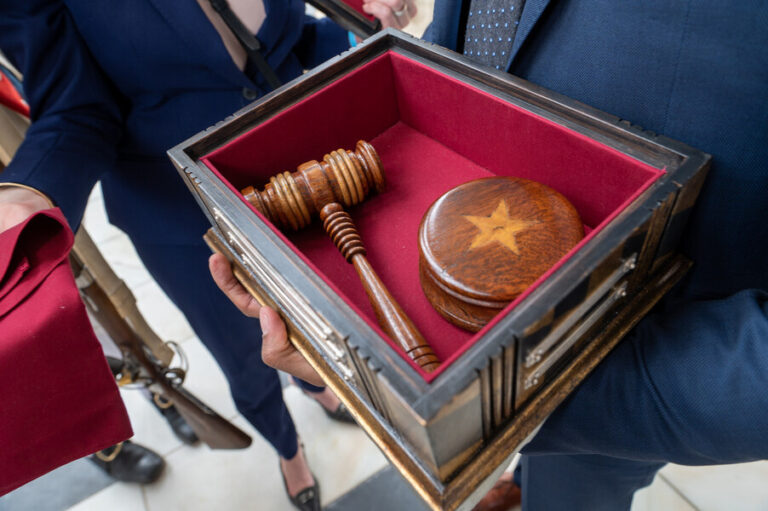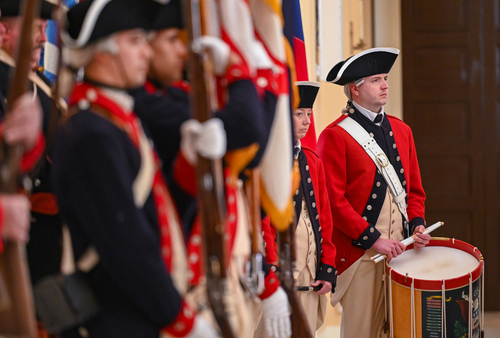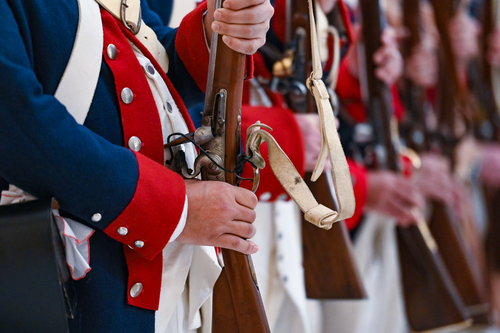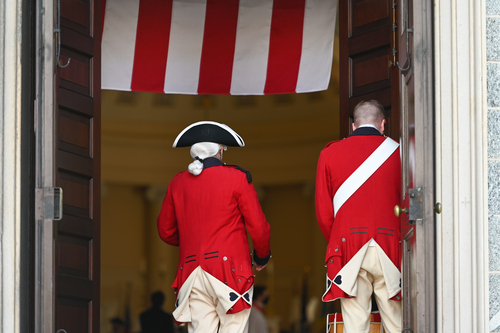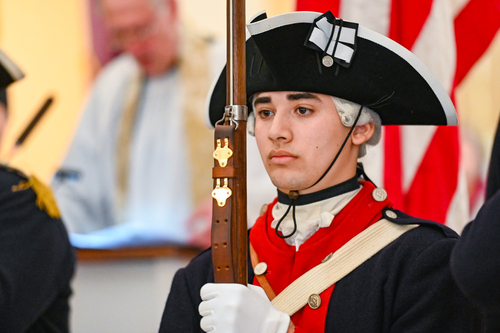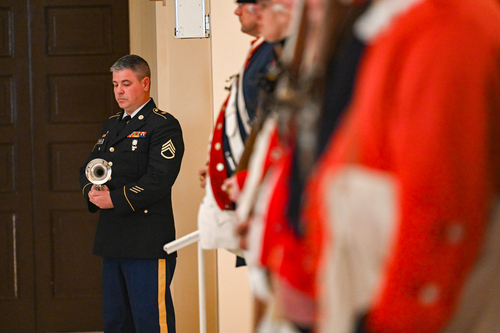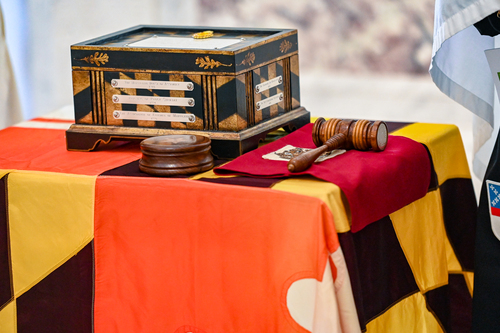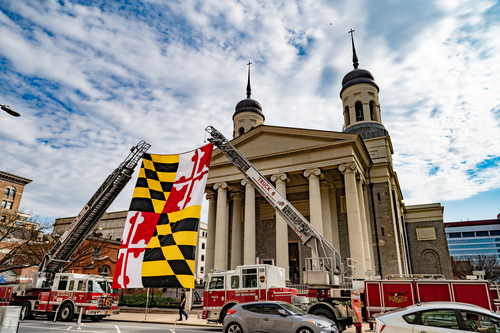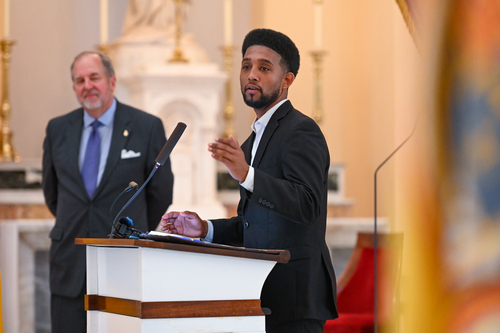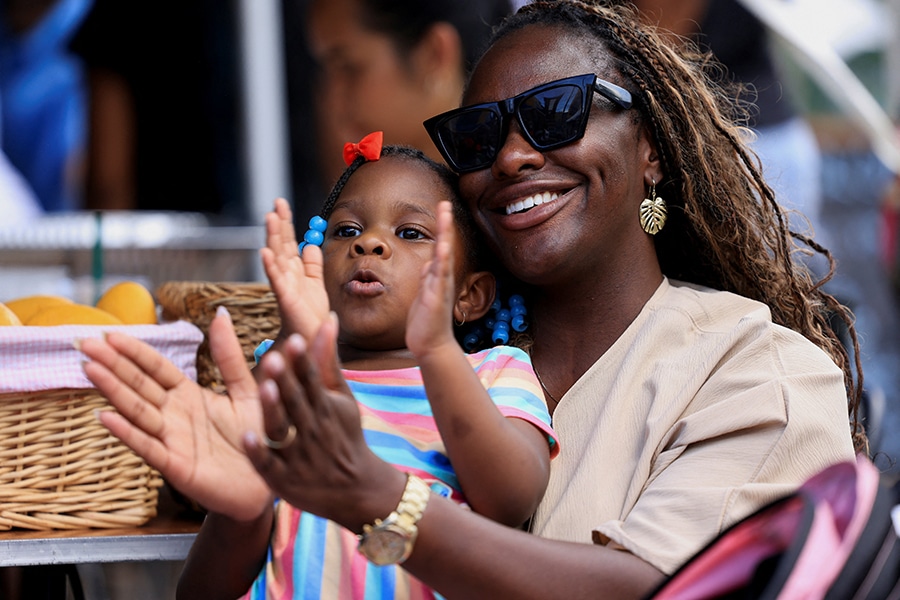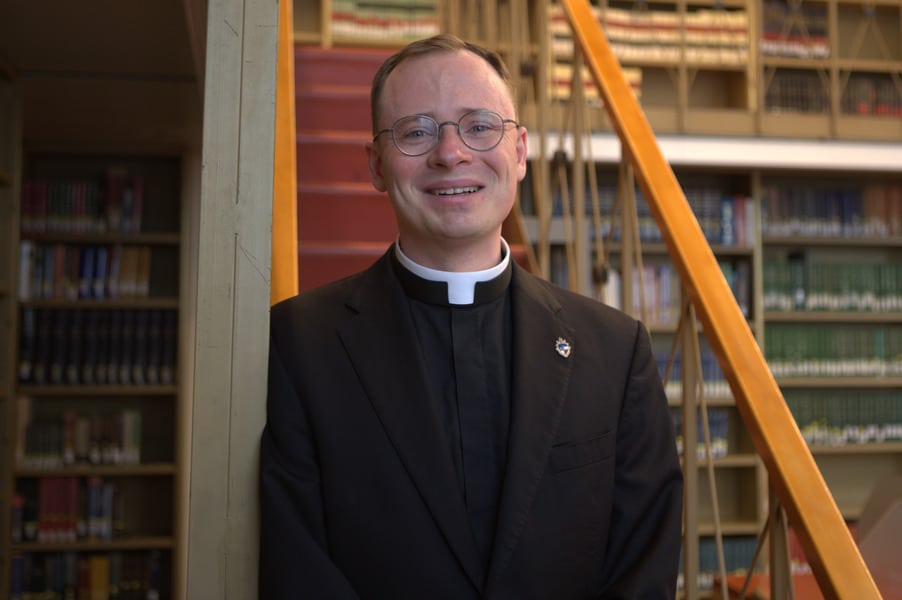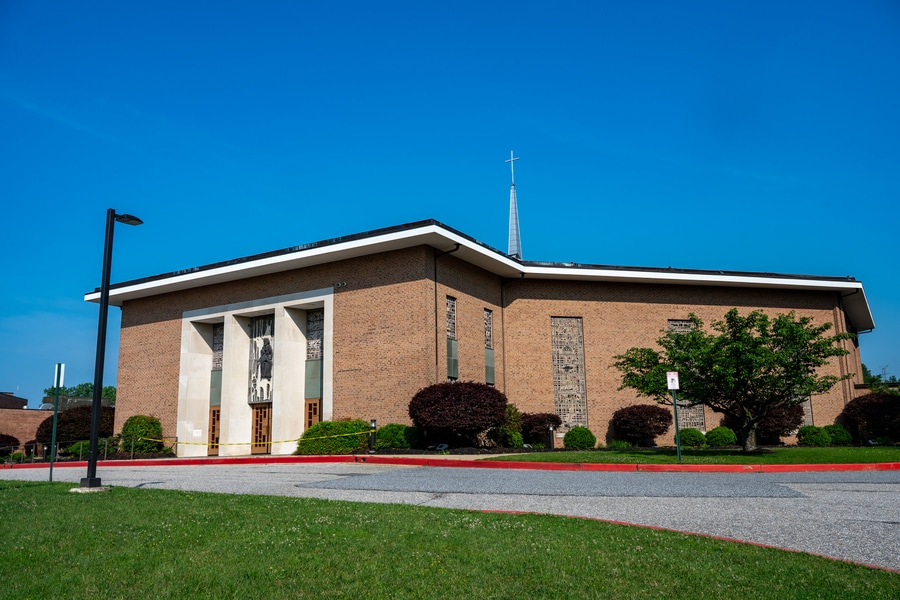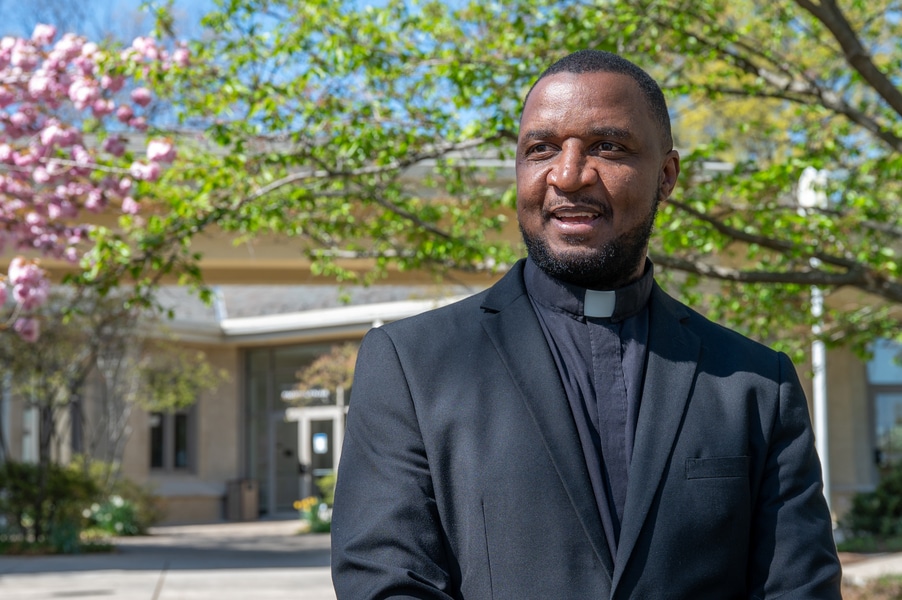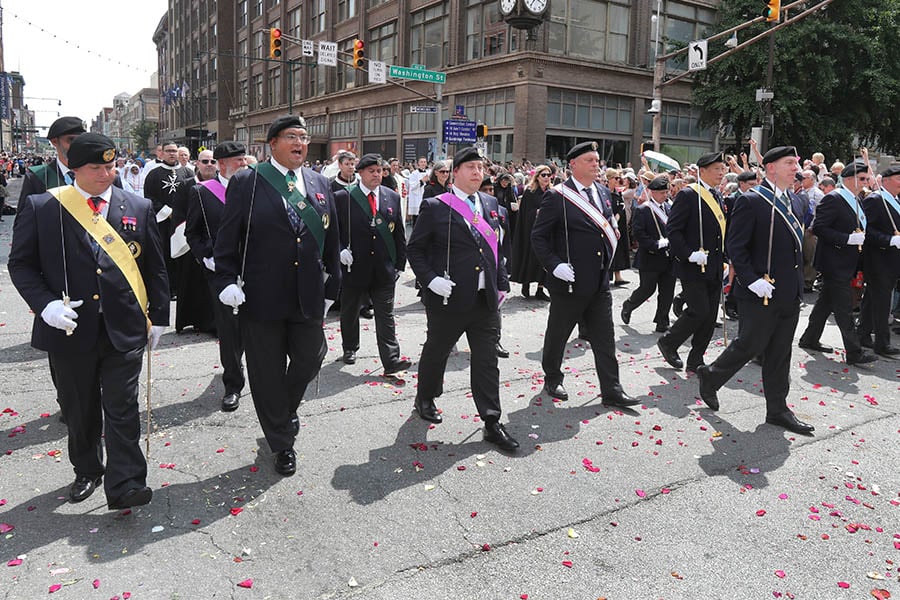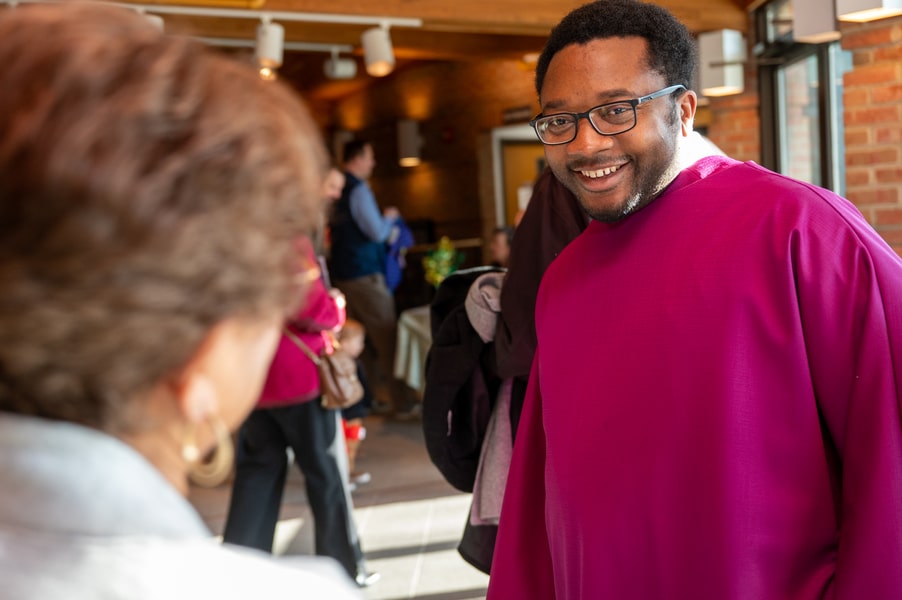In an interfaith service filled with pomp and patriotic fervor, a gavel set was dedicated to the gallant soldiers of the Maryland 400, also known as George Washington’s Old Line.
The ceremony held March 19 at the Basilica of the National Shrine of the Assumption of the Blessed Virgin Mary in Baltimore, brought together religious and political leaders, as well as members of the Sons of the Revolution in the State of Maryland, who sponsored the production of the gavel set and the service itself.
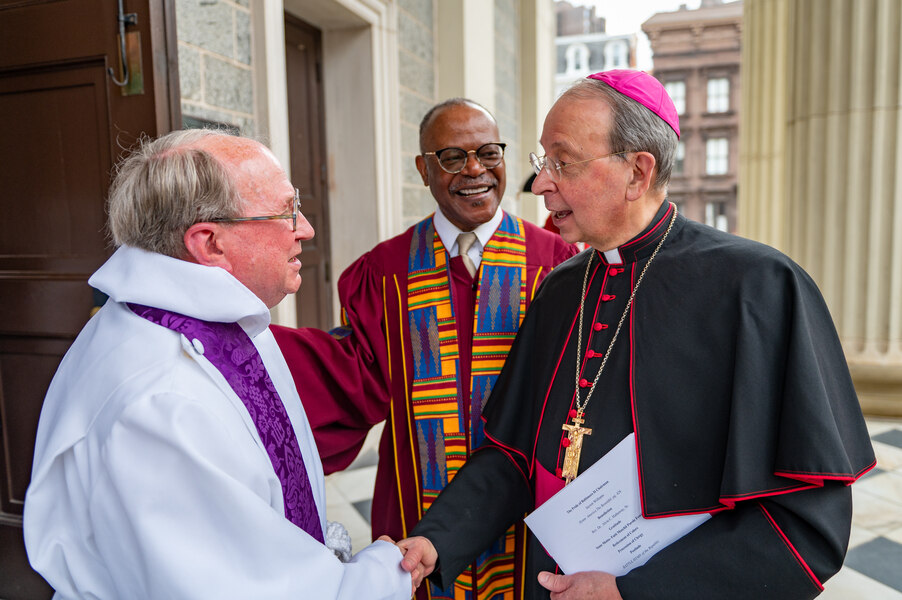
At the center of the service were the gavel, sounding board and decorative box, constructed of wood from two of Maryland’s most historic trees, the Liberty Tree and the Wye Oak.
They were dedicated in a two-hour ceremony marked with a litany for freedom and justice, solemn hymns and patriotic songs, as well as a color guard clad in period dress. The gavel set will sail on the Pride of Baltimore in time for a presentation to the people and the Maryland State Senate on Maryland Day, Friday, March 25.
After paying tribute to America’s defense of liberty, French Consul General François Penguilly spoke of the continuing fight for freedom, even referring to Ukrainian citizens taking up arms to protect their own country. “It is important to remember the cost of freedom,” Penguilly said.
Baltimore Archbishop William E. Lori noted that the gavel is not only a symbol of authority, “the gavel is also a symbol of convening, of bringing people together.”
Scott Watkins, a member of the Sons of the Revolution and a parishioner at St. Ignatius Church in downtown Baltimore and Sacred Heart in Glyndon, shepherded the project. He even salvaged roots of Annapolis’s Liberty Tree soon after it was felled in 1999.
Though both historic trees are gone now, their wood lives on in furniture and other objects. A desk was made with wood from the Wye Oak in 2004 for Maryland’s governors. Crosses made from the roots of the Liberty Tree were given to Prince Charles and Pope Francis for their stands on religious freedom and a third was made for the reconstructed chapel at St. Mary’s City.
The Wye Oak, the nation’s largest white oak and the most famous example of Maryland’s state tree, lived in a two-acre park in Wye Mills on the Eastern Shore. When it collapsed in a severe thunderstorm in 2002, it was more than 400 years old.
The Maryland’s Liberty Tree, a massive tulip poplar on the campus of St. John’s College, served as a symbol of democracy during the American Revolution. The oldest survivor of the era, it was taken down after serious damage from Hurricane Floyd in 1999.
Maryland National Guard’s Adjutant General Timothy E. Gowen recalled the bravery of Maryland’s “Old Line,” the Maryland 400 who in August 1776 saved George Washington’s Army at the Battle of Long Island soon after the Declaration of Independence was signed. The soldiers served as a wedge between the British advance and Washington’s retreat. “What brave lads I lose this day, they shall ever be my ‘Old Line,’” Washington said in honoring them as he crossed the Hudson River.
“Washington escaped with his forces to fight another day,” Gowen said.
A massive Maryland flag hung between the ladders of Baltimore City Fire Department Truck 6 and Truck 16 parked at the entrance to the basilica.
Inside, flags from state and national history festooned the balcony railings, including a replica of the Star Spangled Banner designed by John Shaw and hung at the State House when General Washington resigned his commission as general-in-chief of the Continental Army in 1783.
The gavel and its case were designed by Baltimore woodwright Thomas Brown and turned by Jared Trusso. They are decorated with designs recalling key events in Maryland and American history. Watkins created the historical design elements and Tom Brown did the drafting and plans. Several other artisans worked on the set, including, silversmith Rod Merson, faux finish painter Jaqueline Moore and finisher Phil Kerrigan.
Brown noted that the box includes wood from two additional trees, an ancient cherry that stood until recently at Arlington Cemetery and walnut from the Clifton Estate which was originally owned by War of 1812 hero Captain Henry Thompson.
Also attending were Senate President Bill Ferguson, Baltimore Mayor Brandon Scott, Second Secretary of the British Embassy Phillippe Dickinson, and members of Maryland’s interfaith community.
Editor’s note: This story was updated at 12:55 p.m. on March 22 to correct the name of the sponsor and add the names of those who contributed to the design of the gavel and case.
Use the arrows below to navigate a slideshow with photos from Kevin J. Parks. To view more photos or purchase prints, visit our Smugmug gallery here.
Read More Local News
Copyright © 2022 Catholic Review Media

